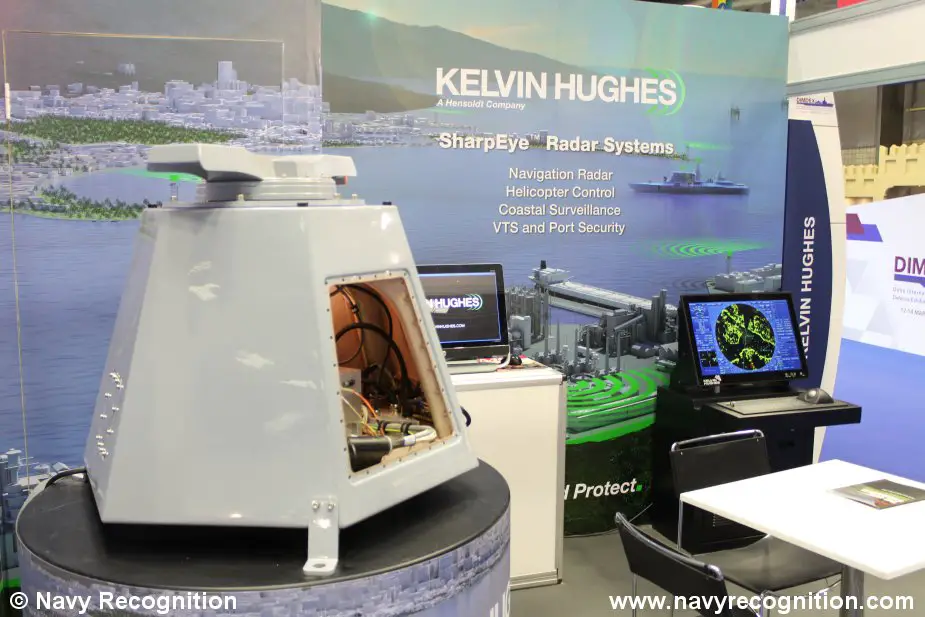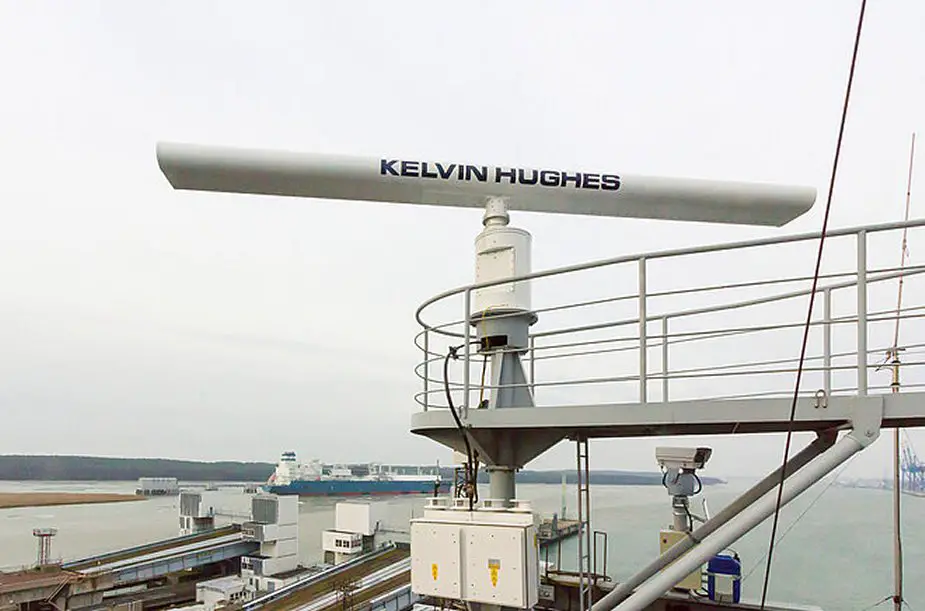HENSOLDT UK, manufacturer of Kelvin Hughes SharpEye radar systems, is pleased to announce that the Lithuanian State Border Guard Service (SBGS) has selected variants of the company’s SBS-900 X-band SharpEye long-range coastal surveillance radar to ensure the safe management and monitoring of vessels in the coastal waters of Lithuania.
Follow Navy Recognition on Google News at this link
 The Kelvin Hughes' stand at DIMDEX 2018. (Picture source: Navy Recognition)
The Kelvin Hughes' stand at DIMDEX 2018. (Picture source: Navy Recognition)
HENSOLDT UK’s shore-based radars were specifically developed to meet the stringent operational requirements of port, harbour and river traffic operators as well as government agencies responsible for the protection of coastal and littoral zones.
Working with the local integrator, Telekonta, the mast mounted SBS-900 were selected to meet the requirements of the Lithuanian SBGS for detection of small targets at long ranges. This is in line with IALA Guideline No. 1111 (May 2015) for advanced level detection.
 HENSOLDT UK’s SBS-900 X-band SharpEye radar monitoring vessels in Lithuania. (Picture source: Telekonta)
HENSOLDT UK’s SBS-900 X-band SharpEye radar monitoring vessels in Lithuania. (Picture source: Telekonta)
About the SharpEye radar:
The advantage of the HENSOLDT UK solution is that the coastal radar does not require an air-conditioned enclosure at the top of the mast. Compared to competitor solutions, the SBS-900 thus comes at reduced system integration and infrastructure costs.
The navigational crew are able to visualise land, air and seaborne targets – unique to SharpEye – thanks to low Radar Cross Section (RCS) and advanced doppler processing capabilities. Together clutter is removed giving significantly improved visibility without reducing picture quality, providing superior situational awareness at all times.
SharpEye also helps reduce maintenance costs through the lifecycle of the unit, as well as significantly cutting down on training requirements thanks to its simple and easy to use design. The Type Approved multifunction sensor, designed to meet MIL-STDs, can be configured to address the unique needs of those using it.



